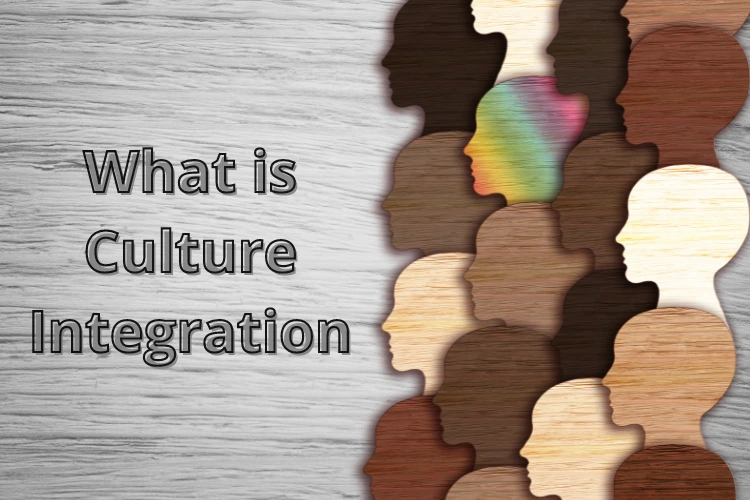Mergers and acquisitions can be a great way to grow a business, but they are also often controversial. Employees may feel confused or unsure about what the future holds. And uncertainty can undercut the upsides of the deal. In order for a merger to be successful, it’s important to pay attention to culture.
Culture can derail a merger if there is a lack of communication, an incongruent cultural fit, or a poor integration plan. In fact, research has shown that around 70-90% of M&A fail to deliver their anticipated benefits because of “cultural issues.” Organizations should recognize culture as an influence that can impact the success of a merger and take steps to ensure that the merger will positively affect their people.
Contents
What is Cultural Integration, and Why is it Important in Mergers and Acquisitions

Culture can be described as the shared values and beliefs that guide how people behave in an organization. It is often intangible, making it difficult to define and measure. But it’s clear that culture is vital in M&A.
When two companies come together, their cultural aspects must merge as well. If the cultural differences clash, it can lead to tension and conflict within the organization. This can disrupt productivity and even lead to the failure of the deal.
That’s why it’s important to consider cultural assessment when planning a merger or acquisition. Addressing culture should not be an afterthought – it should be one of the key factors considered during the pre-deal planning phase.
If you’re considering an M&A deal, make sure you take culture into account. Ask yourself questions like:
- What are the core values of our organizations?
- How do we want our employees to behave?
- What is our vision for the future?
By answering the above questions, you will be able to develop a plan that will positively impact integration efforts and help ensure a successful merger.
How Can Company’s Culture Derail a Merger Process

There are a few ways that culture can derail a merger:
- Lack of communication: If employees don’t know what’s happening, they will be anxious and uncertain. This can lead to rumors and speculation, which can further damage morale.
- Incongruent cultural fit: If the cultures of the two organizations are not compatible, it can lead to conflict and tension. Employees may feel like they have to choose sides, which can damage relationships and trust.
- Poor integration plan: A poorly executed integration plan can leave employees feeling lost and confused. This can cause them to be resistant to change or even quit.
- Poor Collaboration and Management: If the management teams of both organizations do not work well together, it can lead to a lack of communication and understanding. This can make it challenging to make decisions and execute the plan.
- Different Management Styles: Different management styles can clash and cause tension. This can lead to a power struggle and make it difficult to get things done.
The Importance of having a Good Integration Plan

A good culture integration plan is essential for a successful merger. The plan should be designed to minimize disruptions and confusion, and it should be flexible enough to accommodate changes that may occur during the process. A well-executed integration plan will help to ensure that the merger is successful.
Integrating cultures after a merger can be a difficult task, but it is essential to consider the culture and examine cultural differences when planning a merger. Doing so can avoid potential problems and set your organization up for success. In the next section, we will discuss some steps that both(the acquired company and the target company) can take in order to have a successful integration of organizational culture.
These steps are often overlooked in mergers and acquisitions, yet they can significantly impact the deal’s success.
What are Some Steps Organizations can take to Ensure a Successful Merger

A successful merger is one that is able to create value for shareholders. There are a few steps organizations can take as cultural due diligence to ensure a successful merger:
Establish clear goals and objectives for the merger
A merger or acquisition goal is to create a new company that is more successful than the two separate legacy companies. This cannot be accomplished if the cultures of the two companies organization’s values are incompatible. Establishing clear goals and objectives for the merger will ensure that everyone is on the same page and that the merger is successful for a parent company.
Agree on a common vision and strategy.
Having a shared vision and strategy provides a roadmap for the organization’s new cultural transformation. It helps to ensure that everyone is working towards the same goals and that everyone has a clear understanding of what those goals are. The Steering Committee should agree on a common vision and strategy to ensure that the new culture program effectively achieves business goals. Without a common vision and strategy, the company cultures can quickly become fragmented, with different departments working towards their own separate goals. This can lead to confusion and chaos, ultimately leading to the organization’s downfall.
Consider Strengths of both companies:
When two companies merge, it is important to consider the strengths of both existing cultures as cultural aspirations. Not just the weaknesses. Merging companies can often have different strengths in terms of their organizational cultures. If these strengths are not considered, culture change can often lead to tension and conflict within the company. It is essential to retain each culture’s best aspects and integrate them into a new, single culture. This can be difficult, but it can be done by taking into account the strengths of both cultures and trying to find a way to meld them together into a common ground.
Communicate effectively with all stakeholders and employees
Effective communication is one of the most critical aspects of the integration process in a successful merger. All stakeholders and integration teams need to be kept up-to-date on what is happening with the merger. They need to know why the merger is taking place, what will change, and how it will affect them. If there is a lack of communication, it can lead to rumors and speculation, which can damage morale and trust.
Make sure the integration plan is well executed
The integration plan should be designed holistically to minimize disruptions and confusion. It should be clear and concise, and all employees should be aware of it in the same way. The plan should also be flexible enough to accommodate changes that may occur during the process. A well-executed integration plan will help to ensure that the merger is successful.
Ensure that the new company has a strong leadership team
A strong leadership team is essential for a successful merger. The leadership team should be composed of senior leadership members from both companies, and they should be able to work together effectively. The team should have a clear understanding of the goals of the merger and be able to execute the plan.
Conclusion

As we’ve seen, dedicating the time and resources to developing and articulating your new brand will help both cultures understand the merger’s opportunities. And creating a newly developed employer brand after a merger will help everyone get on board and aligned with the new brand and the future of integrated culture.
With the right investment and focus on employees and culture, all employees will meaningfully embrace the changes required during the merger and, as a result, your business will thrive moving forward.
A well-run project management tool can help to take cultural assessment into account when planning a merger or acquisition. By understanding the cultural differences between the two companies and incorporating that knowledge into your planning, you can help to create a smooth transition and avoid any misunderstandings or conflict.
For more information, check out this article: Top Project Management Tool
Also,

